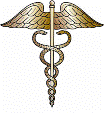
United States Public Health Resources
Date of this Version
2008
Citation
Int. J. Cancer: 123, 1422–1428 (2008); DOI 10.1002/ijc.23691
Abstract
Esophageal adenocarcinoma rates may be increasing, whereas, squamous cell carcinoma rates appear to be decreasing in the United States. Previous population-based research on esophageal cancer has only covered up to 68% of the country. Additional, updated research on a larger percentage of the country is needed to describe racial, ethnic and regional trends in histologic subtypes of esophageal cancer. Invasive esophageal cancer cases diagnosed between 1998 and 2003 (n = 65,926), collected by the National Program of Cancer Registries or the Surveillance, Epidemiology, and End Results program, were included. These data cover 83% of the US population. Esophageal squamous cell carcinoma incidence fell by 3.6%/year, whereas esophageal adenocarcinoma increased by 2.1%/year. Squamous cell carcinoma rates decreased among both sexes in most racial or ethnic groups, whereas adenocarcinoma rates increased primarily among white or non-Hispanic men. Except for white or non-Hispanic men, squamous cell carcinoma rates were similar to, or greater than, adenocarcinoma rates for men and women of all other races and ethnicities. The largest decrease in squamous cell carcinoma rates occurred in the West census region, which also exhibited no increase in adenocarcinoma rates. The rate of regional and distant-staged adenocarcinomas increased, while rates for local-staged adenocarcinoma remained stable. This is the first article to characterize esophageal cancer trends using data covering the majority of the US. Substantial racial, ethnic and regional variation in esophageal cancer is present in the US. Our work may inform interventions related to tobacco and alcohol use, and overweight/obesity prevention, and provide avenues for further research.

